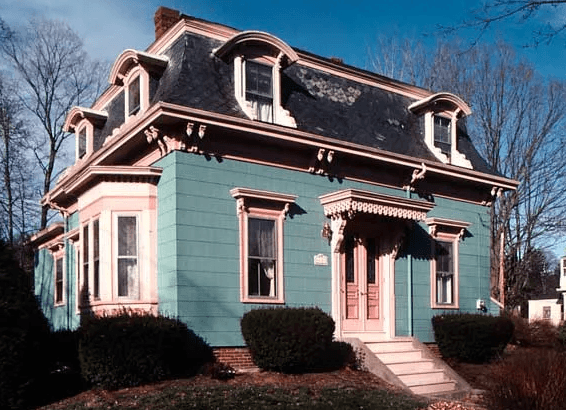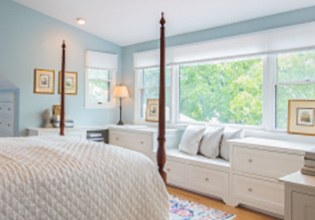What Is a Mansard Style Roof?
Do you want to learn more about the Second Empire style? Whether your home has this type of architecture, you’re moving into a home in this style, or you just want to learn more about house styles in general, this post can help.
The Second Empire architectural style, also called the French Second Empire style or mansard style, can be traced to France, specifically to the reign of Napoleon III, 1852-1870. Residences designed in this style were, therefore, generally large and built for the affluent homeowner. At its most elaborate, the look was sometimes described as a wedding cake. The Second Empire style’s popularity led to a widespread remodeling boom, during which mansard roofs were incorporated into formerly pitched-roof residences.
Mansard Style Roofs
The mansard roof is actually one of the style’s most distinguishing features. Also called a French roof or curb roof, a mansard roof is a four-sided gambrel-style hip roof characterized by two slopes on each side. The lower slope, which has dormer windows, is at a steeper angle than the upper. It can be thought of like a hip roof with the top surface spreading nearly to the edges of the house or building. The two most distinct traits of a mansard roof are the steep sides and a double pitch.
The top of mansard roofing is usually broad and relatively flat so that the interior space under it is maximized. In fact, that’s one of the biggest advantages of the mansard style—it makes maximum use of attic space and provides an easy way to add more stories to an existing structure without requiring masonry.

Source: oldhouseonline.com
In addition to the mansard roof, other distinguishing characteristics of Second Empire architecture include
- Towers
- Ornate Elements
- Decorative detailing (iron casting, heavily bracketed cornices, quoins, and balustrades)
Read more about the mansard style »
Want to learn more about architectural styles? Visit our Architectural Style Guide »
Second Empire Home Remodeling in VA, MD & DC
If you want to remodel your home, it can be helpful to know the architectural style (or talk to a professional) to ensure a renovation that is seamless and complementary. When you’re ready to discuss your project, contact the award-winning team at Wentworth!








